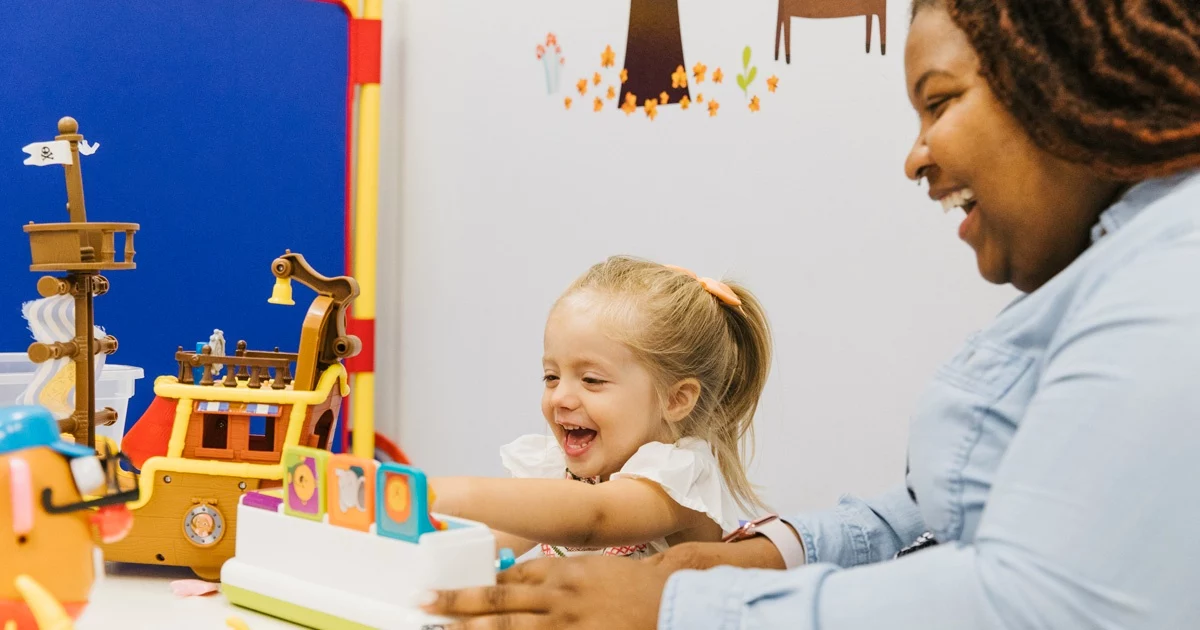Written by Dr. Carly Lapin, Ph.D., BCBA-D
Many parents of both current clients and potential clients reach out to me directly on the tough question of whether their child would benefit more from a comprehensive ABA program or attend the traditional school environment. I want to share my expert opinion and experience to answer this question in more detail for parents still wondering what the best option is.
I will start with a story of a former client who, even years later, I still think about. For the sake of this story, we will refer to this child as Bobby. Bobby was a 4-year-old boy with a diagnosis of autism who entered our full day comprehensive ABA program. Bobby came into the program with behavioral challenges and lacked social skills needed to form and maintain friendships with other same age peers.
After a year of being in a comprehensive ABA program, Bobby had made significant gains. In terms of communication, Bobby was able to talk using small word sentences. His tantrum behaviors reduced to those of same age toddlers which although occurred here and there, were much less severe in intensity and frequency. Bobby was toilet trained for urinations and was making progress towards becoming fully potty trained. Lastly, Bobby had made friends and was participating in social activities on weekends! Bobby had made incredible progress.
In the summertime, Bobby’s parents came to me to let me know they wanted to place Bobby in a traditional school environment. We spoke honestly about the pros and cons and looked at data on where Bobby was today and where his same age neurotypical peers were. Although Bobby had made great gains, my recommendation as the child’s Board-Certified Behavior Analyst (BCBA) was to continue services, for at least another year. Ultimately, Bobby’s parents chose to pull Bobby out of ABA Therapy early and try to integrate him into mainstream schooling.
As a parent myself, I understand wanting to see our child(ren) in an environment with same aged, neurotypical peers and hope with everything that they thrive. And although I disagreed with Bobby’s readiness to enter school, especially mainstream, I respected the decision of the parents, and we said our goodbyes.
Less than four months later, the parents reached back out that Bobby was having outbursts in school and was regressing in terms of verbal and social skills. We often see verbal and social skills regress in children that prematurely end ABA therapy before they are ready. This is because ABA therapists carefully create plans to ensure skills maintain and generalize to new environments, but this takes time. As a result of the regression, Bobby had to be moved from a mainstream classroom to a special education classroom. His parents were desperate to get him back into ABA services so we could spend more time preparing Bobby for the classroom setting. We missed Bobby and we were eager to get him back into services, but due to the 1:1 nature of ABA Therapy, we could not take him in our center until we had another open spot. The parents felt stuck as neighboring companies also had a lengthy waitlist as well.
I still think about the situation with Bobby when parents ask me for my clinical recommendation. Parents’ eagerness to integrate their children into mainstream schooling often motivates them to choose school services over ABA. However, enrolling a child in school when ABA therapy would be more appropriate further delays that child’s ability to participate in mainstream school programs alongside their neurotypical/allistic peers.
As much as we wanted to see Bobby succeed in a mainstream school right away, it is not always the case that a young child is ready for the school environment. Here is a list of reasons why a comprehensive ABA program might be a more optimal choice for children with autism:
- ABA therapy is 1:1, and this ratio is the hallmark of ABA therapy. Each child will have a therapist trained in supporting the child’s individual needs. School Traditional education classrooms often have larger student-teacher ratios.
- ABA therapy is individualized. In the traditional school environment, even with an Individualized Education Program (IEP) in place, classroom sizes can be larger, and your child would be accessing a curriculum in which is not individualized to their learning strengths.
- ABA therapy is tailored to the individual child with unique treatment goals and curriculums to help your child learn, and eventually be able to access the curriculum in a traditional school environment.
- In ABA therapy, your child will have access to a Board-Certified Behavior Analyst (BCBA) who is a masters level clinician with several thousands of hours of fieldwork experience and who have passed a difficult boards exam. Special education teachers have broad knowledge of various types of learners/disabilities in the school but may vary in terms of depth of knowledge, experience, and training with autism and teaching skill acquisition.
- In ABA therapy, trained clinicians meet with parents frequently (e.g., multiple times per month) to provide updates with progress and to coach parents on how to run programs in the home. In the traditional school setting, parents meet with the educational team only several times per year.
- ABA therapy uses robust data collection and data-based decision making. In an ABA program, all your child’s individual goals are accompanied by rigorous data collection measures. This not only helps ensure progress of skills but also helps clinicians make changes in programming when a skill is not being met.
- Should we add that ABA also has a frequent parent training component that helps families continue to build skill generalization. This is not typically a part of a student’s IEP.
In summary, ABA providers are experts specifically in autism and skill acquisition in autism. ABA therapists work one-on-one with children to develop individualized treatment plans that target specific skills and behaviors. This allows for more flexibility and customization than is typically possible in a traditional school setting.
As such, the most effective and possibly fastest way to get a child in less restrictive school programming will be through comprehensive ABA, even if this seems counterintuitive to some parents.
Please note, autism is a spectrum and every child with autism is different. If you are unsure about which option is right for your child, consult with a professional who is familiar with autism spectrum disorder or who knows the child in and out. They can help you to assess your child’s needs and to develop a plan that is tailored to their individual circumstances.



